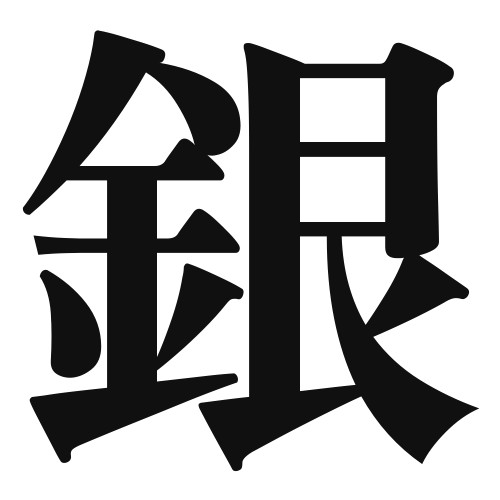1. Overview of Meaning
The kanji “銀” (gin) means “silver.” It represents the precious metal known for its shiny appearance and value, often used in jewelry, coins, and various industrial applications.
2. Formation and Radical
Formation of the Kanji: The kanji “銀” is a phonetic-ideographic character (形声文字). It combines the radical for “metal” (金) with a phonetic component that suggests its pronunciation.
Radical: The radical of “銀” is 金 (kin), which means “metal” or “gold.” This radical is commonly found in kanji related to metals and precious materials.
3. Examples of Usage
Common Words and Phrases:
- 銀貨 (ぎんか, ginka) – silver coin
- 銀色 (ぎんいろ, giniro) – silver color
- 銀細工 (ぎんざいく, ginzaiku) – silver craft
Example Sentences in Daily Conversation:
- このネックレスは銀でできています。 (Kono nekkuresu wa gin de dekiteimasu.) – This necklace is made of silver.
- 銀色の車が好きです。 (Giniro no kuruma ga suki desu.) – I like silver-colored cars.
4. Synonyms and Antonyms
Similar Kanji:
- 金 (きん, kin) – gold: While both represent valuable metals, gold is more precious and has a distinct yellow color, whereas silver is grayish-white.
Antonyms:
- 銅 (どう, dou) – copper: Copper is a less valuable metal compared to silver and has a reddish-brown color.
5. Cultural and Historical Background
Relation to Japanese Culture: Silver has been used in Japan for centuries, not only for currency but also in traditional crafts and art. It symbolizes purity and elegance.
Proverbs and Idioms: One common saying is “銀の匙を持って生まれる” (gin no saji o motte umareru), which means “to be born with a silver spoon,” indicating someone born into wealth or privilege.
